Ancient navigators once relied on the seasonal monsoon winds to make long distance voyages across the northern Indian Ocean, linking Arabia and Egypt to India and China. There was also a lesser known southern monsoon trade route linking Asia directly to sub-Saharan Africa, but no one is sure exactly when or from where it started.
University of Rhode Island (URI) Professor of History Bridget Buxton spent five weeks in the isolated Chagos Archipelago of the British Indian Ocean Territory (BIOT) capturing rats to find out. When deciphered, the DNA of the non-indigenous black rats represents a genetic chronicle of their ancestors’ travels across the globe. Buxton theorized that the Chagos rats had arrived on the islands long before their discovery by Europeans in the 16th century, riding on ships of the Roman Empire and their ancient trading partners in Africa, India, and China. It’s a theory that gives Mediterranean and indigenous African civilizations a far greater role in the southern monsoon trade than previously suspected.
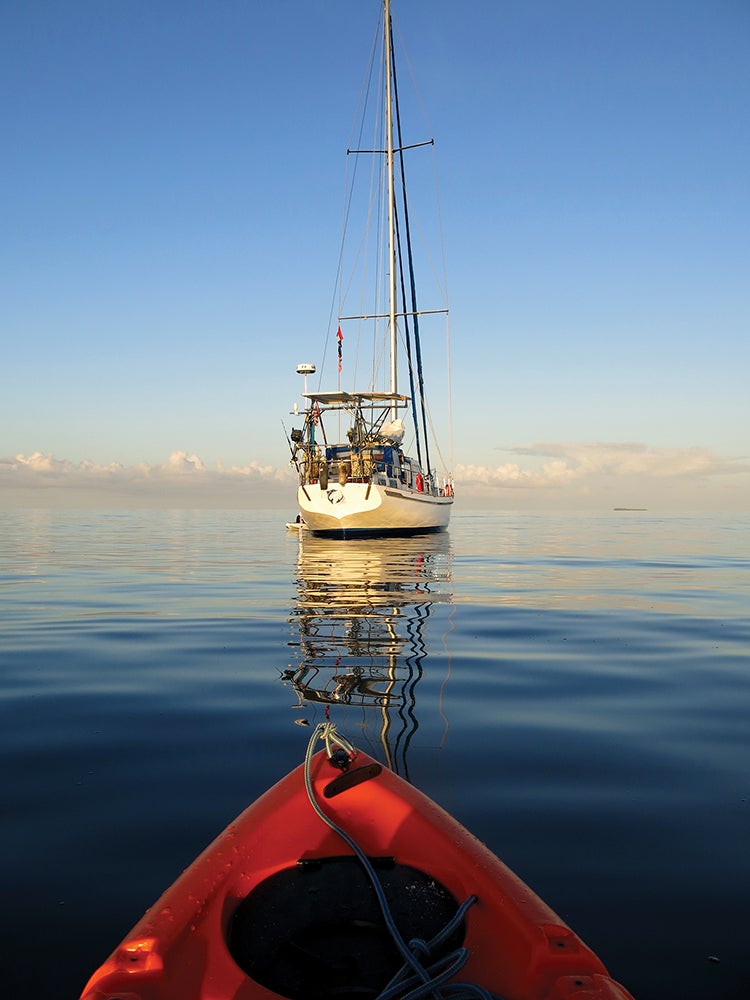
“The question we can’t yet answer is exactly when and from where those original voyages started, which is tied to many big questions about human migration and the ecological changes it causes,” Buxton says. “One mystery we’d like to solve is the location of the ancient port of Rhapta, the legendary furthest outpost of Roman trade in Africa.”
Buxton studied evidence that the ancient Greeks and Romans knew how to harness the southern monsoons to cross the Indian Ocean from East Africa, the route that Arab seafarers later revealed to Portuguese explorer Vasco da Gama in the 15th century. Proving that the Romans were sailing directly from Tanzania to Sri Lanka would require finding an ancient shipwreck literally caught in the act of a trans-oceanic voyage.
Rather than attempting to search the depths of the 27 million square mile Indian Ocean, Buxton focused on the Chagos Archipelago, which early Portuguese mariners had identified as a major navigational hazard on the subequatorial crossing. Even then, the potential search area of over 60 islands and reefs spread over a 5,000-square-mile marine reserve seemed impossibly large. Fortunately, new research into rat genetics led by Biological Sciences Associate Professor Jason-Munshi South at Fordham University in New York provided a solution. Researchers at Fordham had recently been able to determine the date that rats, the ultimate shipwreck survivors, arrived on remote islands by studying their DNA.
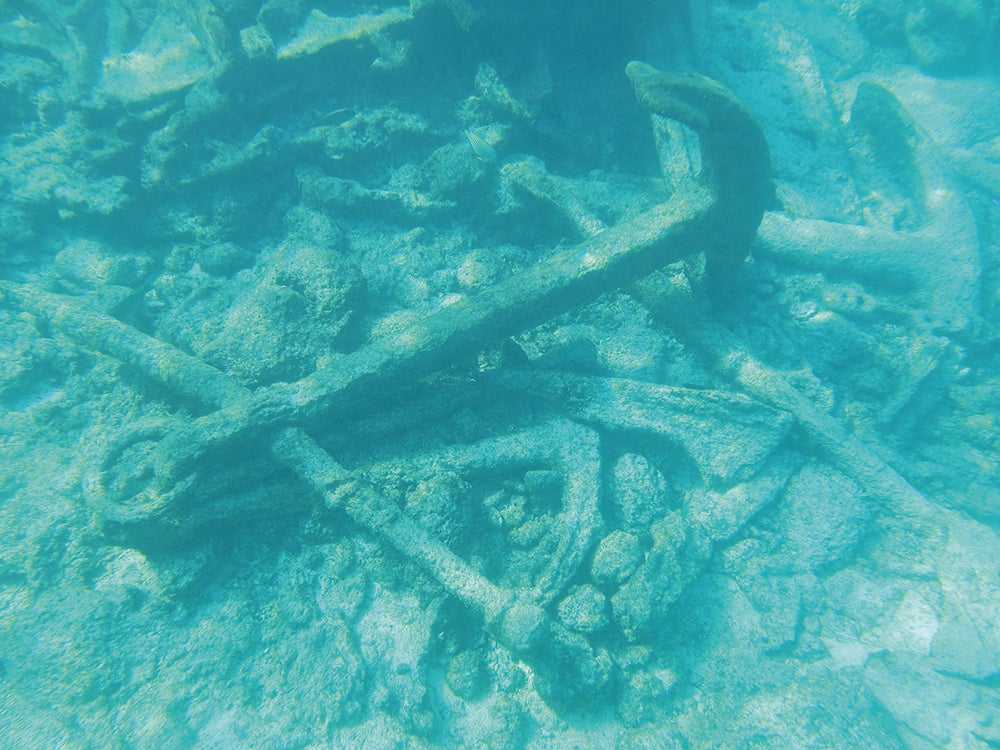
If the rat population on any of the Chagos Islands pre-dated the establishment of French plantations in the late 18th century, that island would be a good place to search for ancient shipwrecks.
Munshi-South and Buxton won a National Science Foundation High-Risk Research in Biological Anthropology and Archaeology grant (NSF-HRRBAA) to pay for the analysis of Chagos rat tail samples.
“To get this particular grant, you basically have to prove that your idea is so crazy it would never get funding from anywhere else.”Bridget Buxton
“To get this particular grant, you basically have to prove that your idea is so crazy it would never get funding from anywhere else,” Buxton says.
The rest of the expedition was privately funded through OceanGate Foundation and received helpful support from the Chagos Conservation Trust and the Zoological Society of London, a former BIOT governor, and Chagos expert Dan Urish, a URI emeritus professor of engineering.
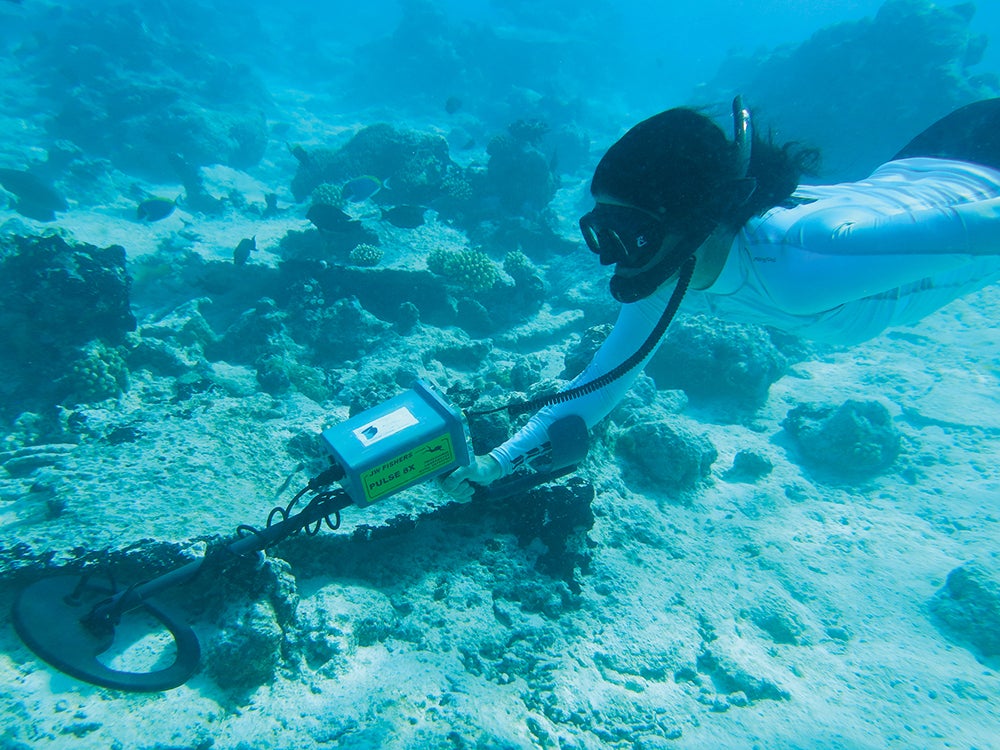
Such an unconventional expedition required an unconventional research vessel to access the most remote and uncharted reaches of the archipelago. The 60-foot sailing yacht Jocara, owned by British oceanography Professor John Potter from the Norwegian University of Science and Technology, sailed all the way from Malaysia for the task. Along with Captain Potter’s Dutch wife and first mate Caroline Durville, their son Casper Potter, and American Gary Philbrick, the five sailed out of the Maldives in December 2021 for the research adventure of a lifetime. On board, Buxton carried a special treasure: the flag of the Society of Women Geographers, awarded only to “expeditions of such unusual character that their successful accomplishment… makes a permanent contribution to the world’s store of geographical knowledge.”
While using rats as a proxy to study human migration is not new, this kind of archaeological study in the BIOT is unprecedented. The U.K. government strictly controls access to the entire area, which is a critical breeding habitat for seabirds and includes the important U.S. military base of Diego Garcia. Buxton is the first archaeologist to be granted a permit to explore the territory’s uninhabited islands.
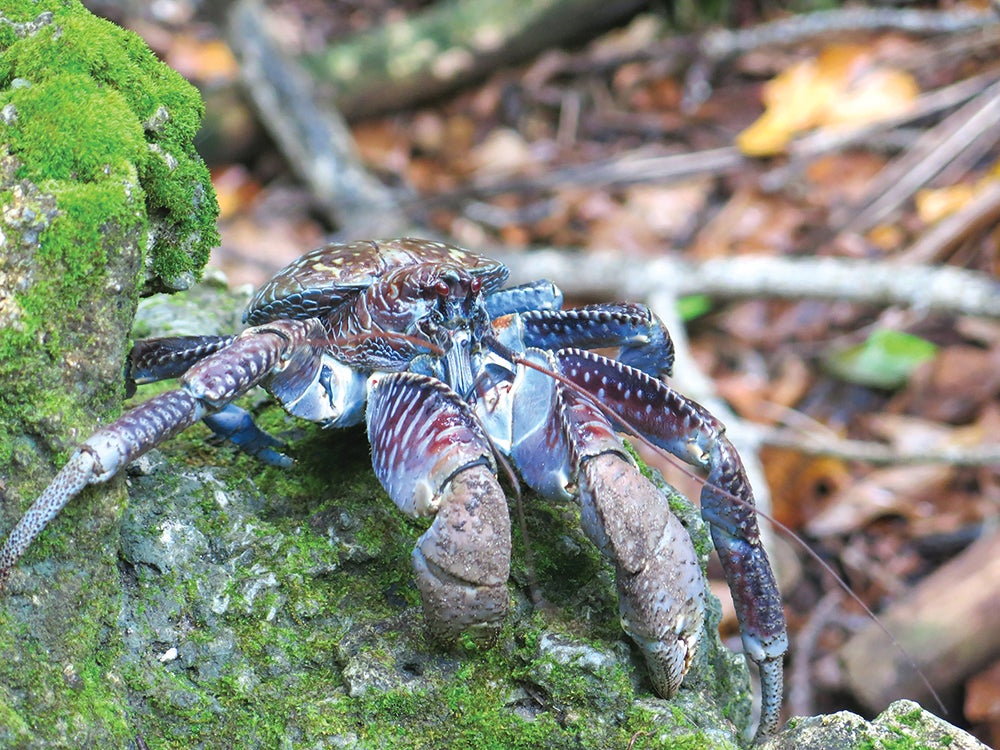
Buxton’s expeditions normally involve using sophisticated equipment to find and study shipwrecks. On this trip, she set rat traps laden with peanut butter.
“Epic nightly struggles between us and the crabs ensued,” she says, describing how giant coconut crabs would break the traps and eat the rats. The group started with more than 100 working traps and ended with fewer than 30. Still, they brought back about 70 rat tails from all 21 islands and atolls on their itinerary. The process of lab analysis is still ongoing.
“It’s not just about putting a tail in a test tube and it’s 23andMe for the rat,” Buxton says. “There are complex research processes to compare these lineages to rats from all around the Indian Ocean.”
Besides fending off crabs and catching rats, the team also got creative with their underwater survey equipment. Buxton wanted to see if it was possible to use plastic kayaks and 12-volt car batteries, rechargeable from Jocara’s solar panels, to deploy oceanographic survey tools such as drop cameras, hydrophones, magnetometers, and side scan sonar — equipment that is normally deployed from large, environmentally unfriendly research vessels.
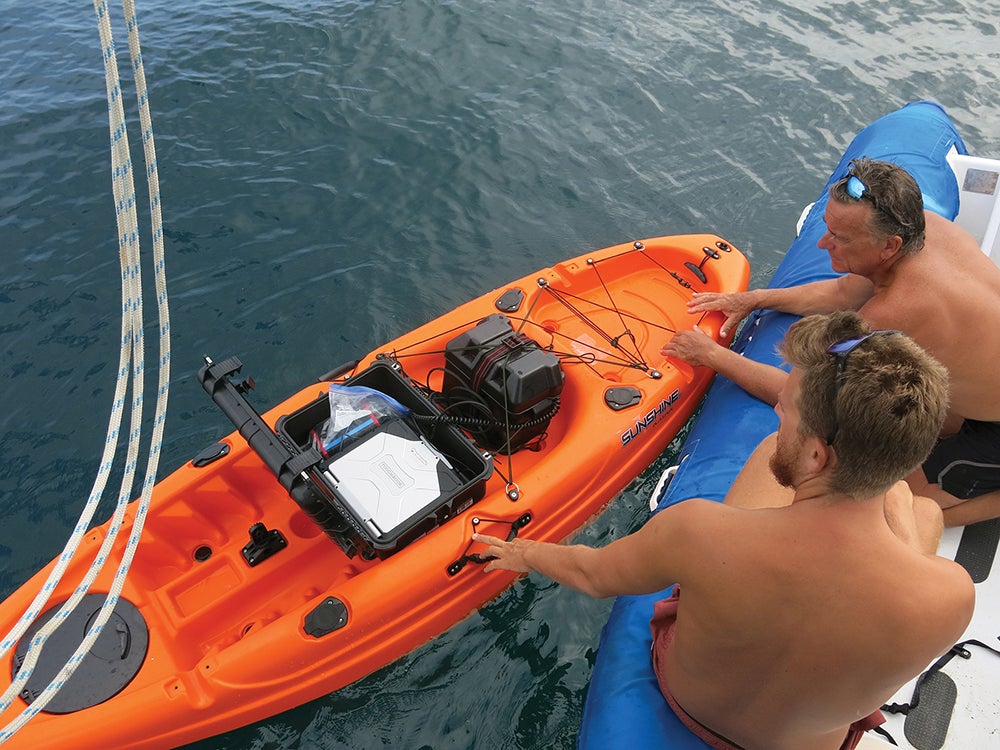
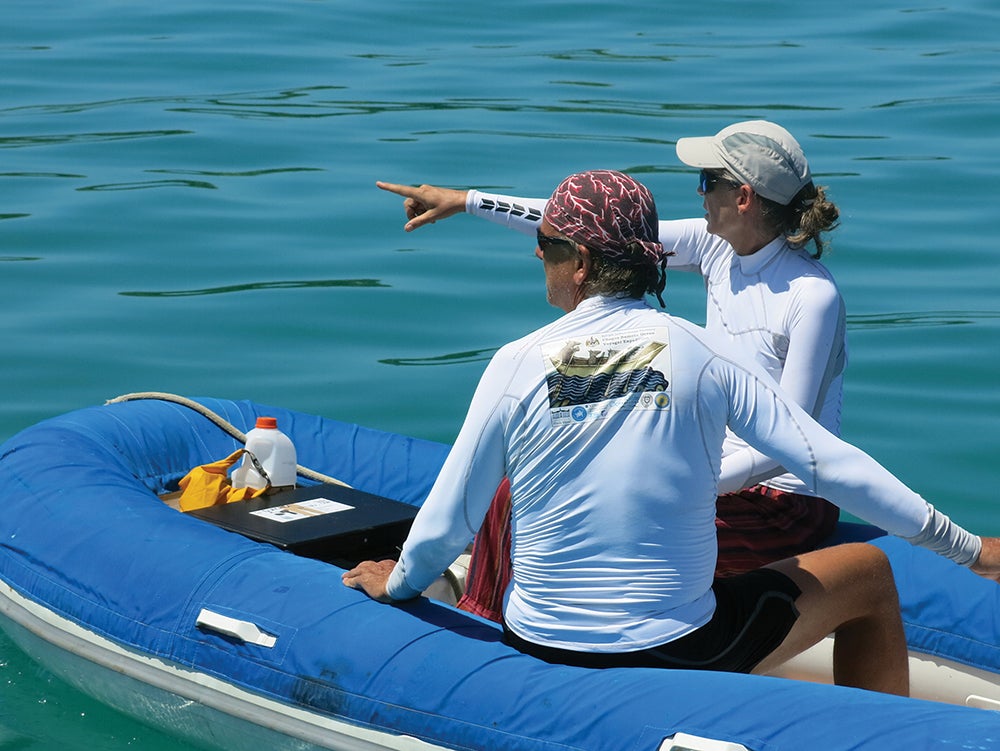
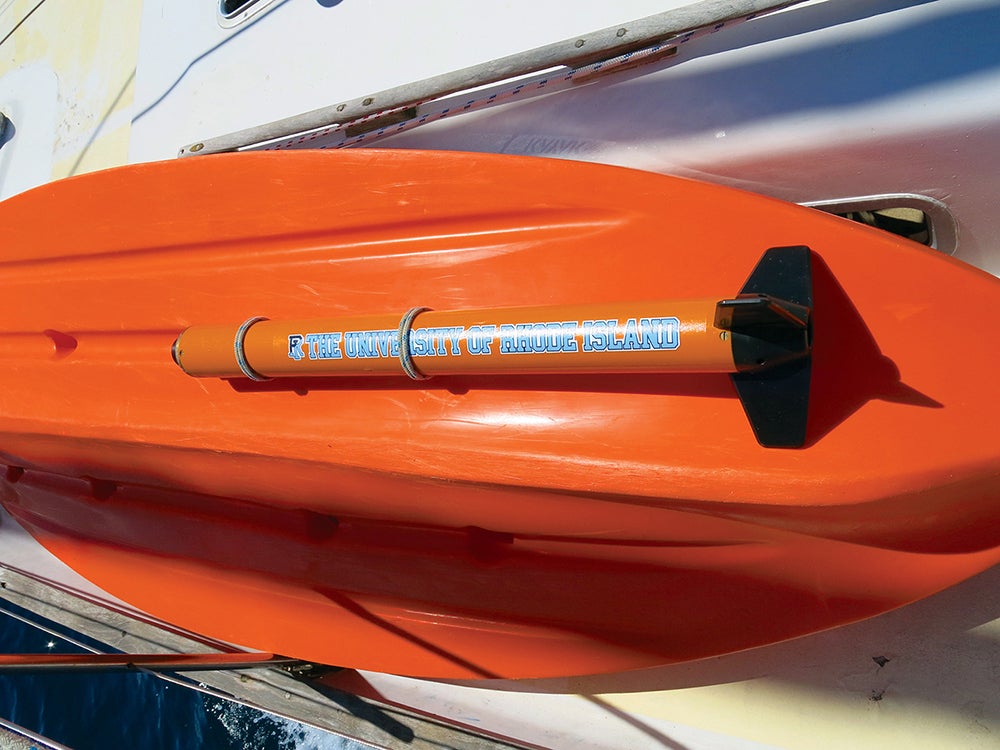
Left: Underwater mapping uses a Blueprint Subsea sonar system being deployed by Casper Potter and John Potter. Center: Captain John Potter and Caroline Durville go into a lagoon to get eDNA samples.
The experiment was a resounding success as the team located several historic anchors and the SV Diego, a three-masted iron barque wrecked off Eagle Island in 1935. They also collected samples of environmental DNA and surveyed nesting seabird populations. By thinking outside the box, Buxton says they were able to accomplish an ambitious million-dollar interdisciplinary scientific expedition for less than $100,000.
“So much money is spent on big oceanographic projects,” she says. “You don’t always need to spend that much money to work in the remote oceans. We were able to deploy most of the technology of a ‘big ship’ oceanographic expedition from a small sailboat.”
She is confident that if the Chagos Islands hide any ancient wrecks, they have the tools to find them. It’s a truism of archaeology that the greatest discoveries are made in the library, but this time they were made in the lab.
By thinking outside the box, Buxton says they were able to accomplish an ambitious, multi-million dollar, interdisciplinary scientific expedition for less than $100,000.Bridget Buxton
“We were able to deploy most of the technology of a ‘big ship’ oceanographic expedition from a small sailboat.”
After many months of careful sequencing and analysis, Professor Munshi-South shared the results of the preliminary genomic analysis of 21 of the Chagos specimens. He focused on a single gene in the mitochondrial genome and compared it to the large reference set of mitochondrial DNA samples from black rats all around the world.
Preliminary analysis revealed that most Chagos rats share a DNA sequence that is widely distributed along ancient trade routes, making them distant cousins of the black rats of India, but also Madagascar and many areas in East Africa. The rats of the Maldives and Diego Garcia, however, come from a different and more recent lineage probably associated with maritime trade routes of the post-medieval period. This knowledge aligns with Buxton’s theory that the oldest rat populations would be found on the western side of the Chagos archipelago, based on the hypothetical route of an ancient ship sailing from Southern Africa to Southeast Asia.
More than half of the 21 rats had identical mitochondrial genomes, indicating many centuries of inbreeding. The remainder of the 70 tails are still being studied. Further analysis will indicate how many generations that inbreeding goes back, leading to an approximate date of arrival on the islands.
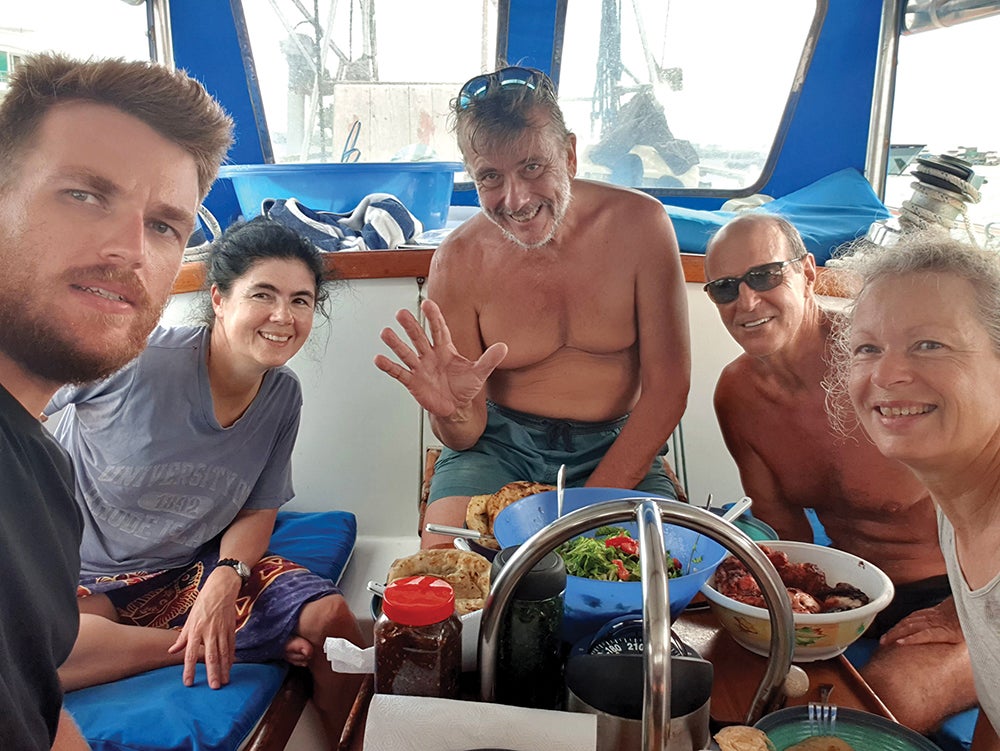
Based on the preliminary data, Buxton has identified the best island to search for ancient wrecks — though she is not revealing the location yet.
“The biggest surprise was who our Chagos rats are most closely related to, based on currently available data,” Buxton explains. “It’s the rats from a remote Late Roman-era archaeological site called Justiniana Prima in the mountains of Serbia. When the Roman Empire retracted in the 6-7th century CE, such frontier outposts became depopulated and isolated, effectively becoming islands as far as the local rats were concerned. You could say these Serbian rats are Roman Empire rats.”
Recent genetic studies suggest that black rat populations around the world can be linked to two genetically distinctive waves of expansion — the first during the Roman Empire, and the second during the revival of global trade led mainly by Arab seafarers in the Medieval period. The genetic similarity between the Chagos rats and the legacy population of Justiniana Prima, abandoned in the 7th century CE, is intriguing.
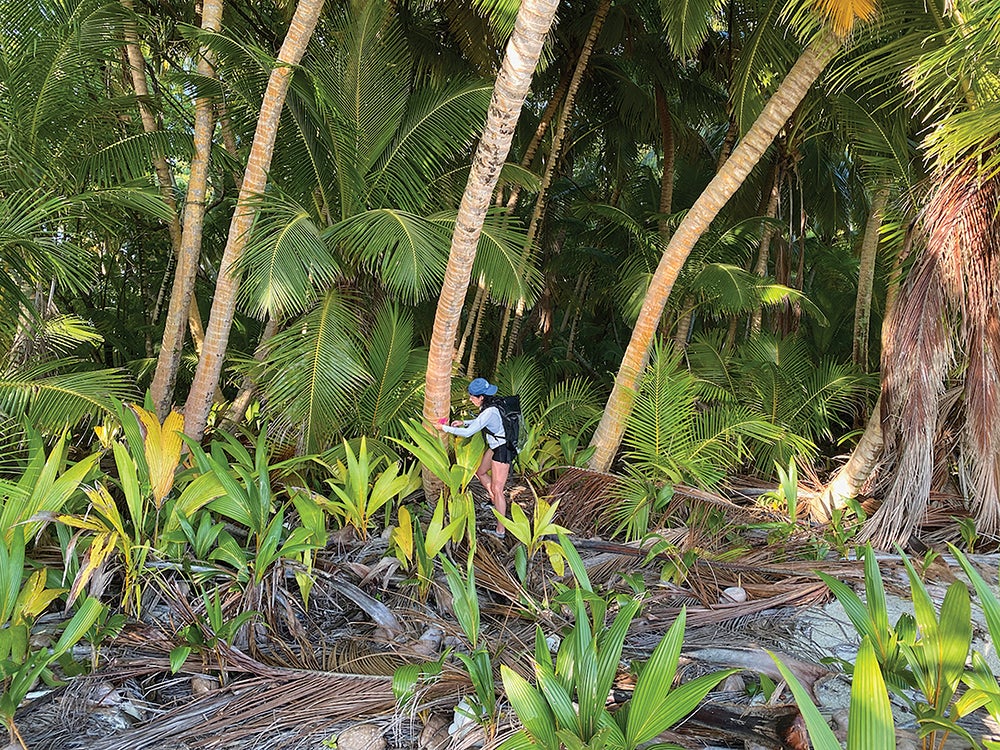
Buxton immediately contacted a colleague in Tanzania, Anthropology Professor Felix Chami of Dar es Salaam University, to share the preliminary Chagos results. Chami and his team are researching mysterious sunken ruins and Roman pottery found on the Tanzanian island of Mafia, a hypothetical jumping off point for Roman-era monsoon voyagers. The evidence was now even more compelling: Mafia in Tanzania must be Africa’s fabled lost Roman port of Rhapta. Buxton will join the Tanzanian team as they begin mapping the site this summer.
For the Munshi-South lab, the next step is to sequence the entire genomes of the Chagos rats to pin down the origins and timing of divergence between Chagos and the rat populations of India, Madagascar, and East Africa. The analysis should be completed before Buxton returns to Chagos, which she hopes to do in 2024. However, her expedition goals are no longer driven only by the desire to find shipwrecks. Her current fundraising is directed towards assisting the Chagos Conservation Trust’s efforts to eradicate the rats and restore the archipelago’s unique biodiversity.
“This expedition changed me and changed the way I view the world,” Buxton says. “I’ve done this for more than 20 years. I’ve found a lot of shipwrecks. I know what it’s like to pick up handfuls of gold coins and excavate ancient treasures. At the end of the day, that’s not what matters. It’s the islands themselves that are important — the birds and the coconut crabs, the reefs, and the ocean. They are the real treasure.”
The project that brought Buxton hundreds of miles across the Indian Ocean showed how a little innovation and a lot of passion can make even the most impossible-sounding research endeavor possible.
